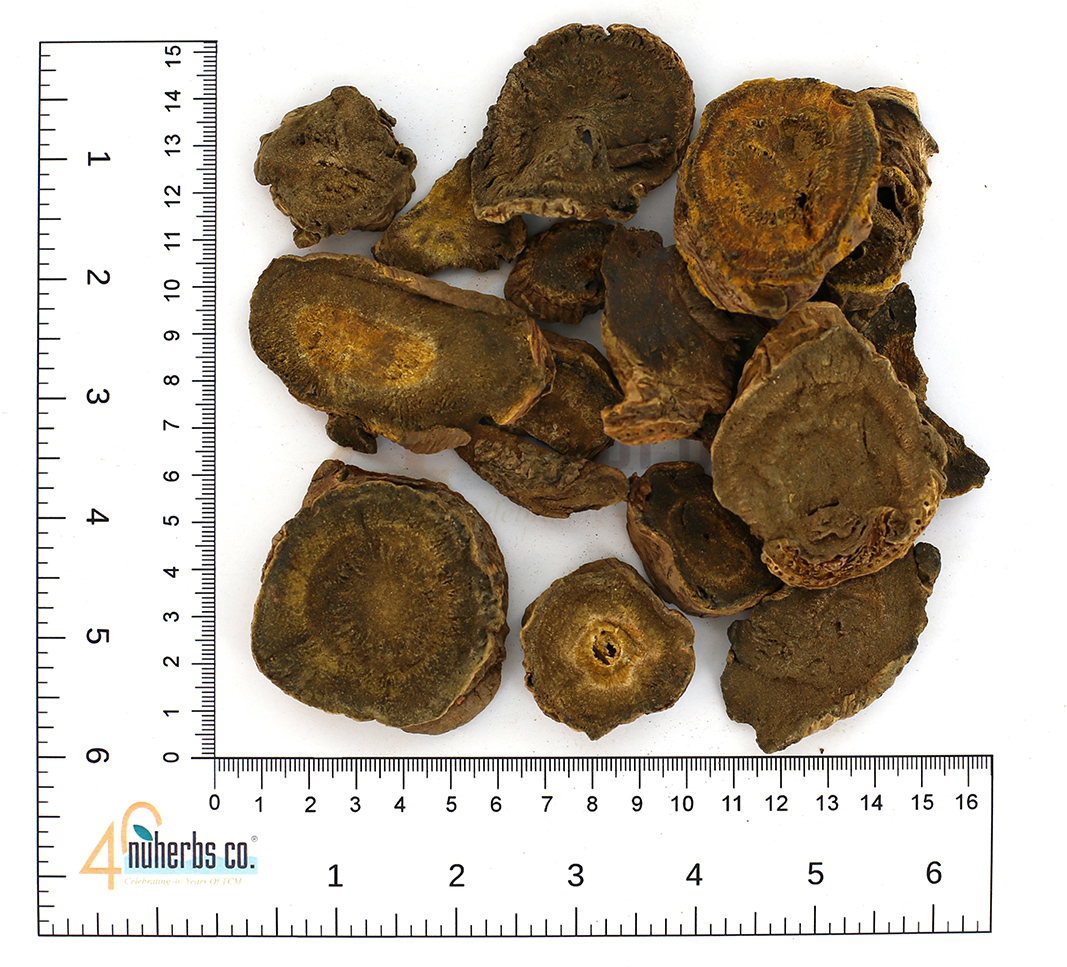Single Herb Glossary
Dà Huáng 大黃

| Pharmaceutical name | Rhei Radix et Rhizoma Rheum palmatum root & rhizome Rhubarb root & rhizome “big yellow” |
| Category | Downward Draining |
| Key Properties | Purges clumped heat in the Intestines Cools the blood, removes blood stasis Can stop bleeding (charred) |
| Properties | Bitter Cold |
| Tropism | KD, LI, LU |
| Actions & Indications | 1) Drains Heat & Purges Accumulation 2) Drains Fire 3) Clears Heat, Transform Damp, Promote Urination (dysentery, Lin) 4) Drain Heat from the Blood (Stop bleeding, charred) 5) Invigorates Blood & Dispels Blood Stasis (alcohol, jiu zhi) 6) Clears Heat & Reduces Fire Toxicity (topically or internal) |
| Dosages | 3-15g; last 3-10 min |
| Contraindications (TCM) | Pregnancy, Qi & Blood Deficiency, no constipation or Blood stagnation Caution with menstruation, postpartum women without stasis, lactation (may cause diarrhea in infants), weak St/Sp |
| Contraindications (Western) | |
| Chemical Composition | Sennoside A,B,C,D,E,F; emodin, aloe-emodin, chrysophanol, rhein, physcion, rhein-8-mono- β-D-glucoside, physcion monoglucoside, aloe-emodin-8-monoglucoside, emodin monoglucoside, chrysophanol monoglucoside |
| Pharmacological Effects | • Laxative: remarkable purgative effect; sennoside A, aloe-emodin, and rhein are components most responsible for this purgative action; works directly on the large intestine to increase contraction and peristalsis; however, purgative effect does not occur until 6 to 8 hours after oral ingestion, which indicates that it must be absorbed systemically before it exerts its effect on the large intestine; has no effect on small intestine and will not interfere with normal absorption of nutrients; interestingly, contains small amount of tannin that may cause constipation if used repeatedly for a prolonged period of time • Hepatoprotective: hepatoprotective effect, especially against carbon tetrachloride-induced liver damage; in mice with acute icteric jaundice, effective in reducing extent of liver damage (necrosis of hepatocytes), while the placebo group made no comparable progress • Cholagogic: intravenous injection of alcohol extract effective in increasing excretion of bile in dogs and cats within 5 to 15 minutes; peak effect observed after 8 to 10 minutes, and duration of action was approximately 30 minutes • Hemostatic: intraperitoneal injection effective in stopping bleeding in mice; hemostatic effect attributed to herb's ability to increase viscosity of blood and to facilitate aggregation of platelets • Antibiotic: broad spectrum antibiotic effect; most effective against streptococcus and staphylococcus species of bacteria; also inhibits activity of Corynebacterium diphtheriae, Bacillus subtilis, Salmonella typhi, and Bacillus dysenteriae; constituents responsible for the antibiotic effect include emodin, rhein, and aloe-emodin • Cardiovascular: various impacts on cardiovascular system; in one study, intravenous injection reduced blood pressure by 20% and heart rate by 12% in mice; in another study, administration to anesthetized dogs associated with decrease in oxygen consumption of cardiac muscle, and with reduction of heart rate and peripheral resistance • Nephroprotective: decoction effectively reduces blood urea nitrogen (BUN) and creatinine as demonstrated in both in vitro and in vivo studies • Others: associated with antipyretic, analgesic, and anti-inflammatory effects |
| Herb-Drug Interactions | • Cardiac glycosides: prolonged use of herb may cause loss of potassium, leading to increased toxicity of cardiac glycosides, such as digoxin (Lanoxin) |
| Classical Formula(s) |
Tiao Wei Cheng Qi Tang (Regulate the ST and order the Qi decoction) 調胃承氣湯 (调胃承气汤) Wen Pi Tang (Warm the SP decoction) 溫脾湯 Zhi Shi Dao Zhi Wan (Unripe Bitter Orange Pill to Gide Out Stagnation) 枳實導滯丸 |
This information is a reference tool for Chinese herbal studies. It is not intended to replace professional medical advice. Please consult a primary health professional if you require health advisory.
